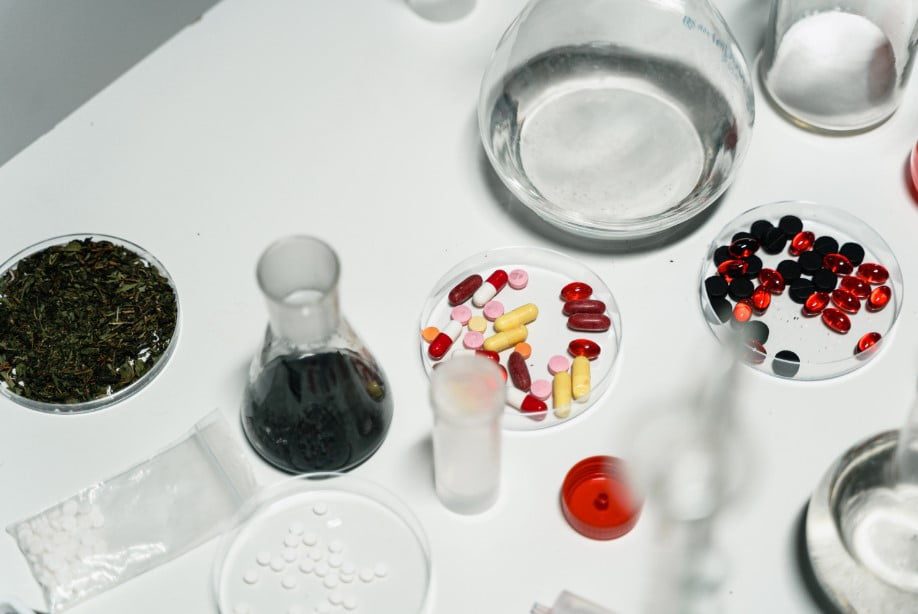Substance abuse or substance use disorder is a medical term that describes the excess use of drug variants, alcohol, and other chemicals to intoxicate the brain.
While there is no specific definition of the phrase recognized universally, the habit is considered detrimental to the physical and mental health of the individual involved.
Human indulgence in drugs and alcohol actually dates back to ancient times. In the beginning, they were used for cultural and festive reasons to brighten up occasions.
They are now commonplace and a favorite pastime, thanks to scientific innovations, technological advances, and lifestyle changes. As a result, laboratories are churning out new substances every year, and remote cultures sell their little known brands to the global market!
Just as well, prescription pills are becoming second nature in our lives. We depend on them to relieve pain, calm our nerves, and fight depression. We also use them to neutralize social-emotional challenges that are on the increase.
Popular legal substances around the world include alcohol and tobacco. The illegal ones are marijuana, ketamine, heroin, meth, hallucinogens, cocaine, ecstasy, and inhalants. Khat is a legal drug in Asia and Africa, but illegal in the USA and UK. Commonly misused prescription drug groups include opioids & other pain killers, weight loss medications, sleeping pills, and prescription pills for anxiety disorder.
Excesses in substance use can lead to poor social skills, delinquency, poor academic performance, and unhealthy eating habits in children and teens. Unhealthy eating is the cause of many health impairments, and may lead to organ damage, weak brain, sleep disorders, fatigue, restlessness, etc.
Substance abuse can also interfere with the functions of body nutrients such as amino acids. In persons with chronic substance abuse, they are blocked from facilitating energy production, cell growth and repair. This is because critical body organs are busy fighting and getting rid of alcohol and drug residues from the body.
What makes children & teens crave substances?

Factors leading to substance use in children and teens revolve around emotional, behavioral, environmental, educational, and genetic factors. Their living spaces, family lifestyle, information management, and lack of self control will determine how easily they become culprits.
1. Drugs and alcohol are presented as attractive!
Research continues to show how the portrayal of drugs and alcohol in mass media greatly affects how children perceive the role of these substances in their lives.
Television shows, movies, music, adverts, and social media persistently bombard them with the allure of these substances.
A meta-analysis integrating seven studies (758 participants, all students) found that viewing alcohol advertisements increased immediate alcohol consumption relative to viewing non-alcohol advertisements…
– National Library of Medicine
Celebrities and the better placed in communities influence children by making them believe that drugs and alcohol are good.
It is pretty hard to convince the youths that their favorite celebrities are wrong!
2. Children/teens just want to fit in with peers
Most children and teens growing into adulthood actually live for today, and may not understand the consequences that result from most of their actions and choices.
They are willing to try out new ventures, including alcohol and drugs, without much thought.
Their adventures reflect the desires to fit in with peers in order to feel liked and adored. This is common in schools and social gatherings, where children have to contend with hidden insecurities and low self-esteem.
The desire to be recognized and ‘fit in’ is so powerful that children willingly join the more popular social groups if invited.
Most of the time, these sociable circles are led by older students who engage in negative habits such as substance abuse and bullying.
3. Children/teens are born curious!
Well, who is not curious in this life? We all are. Children are more curious just like we were during childhood.
Curiosity is an attraction because it forms the foundation upon which children and teens learn and discover who they are.
They see their favorite musicians and celebrities drink alcohol, and smoke weed at will! This leaves them with a heightened sense of curiosity and desire to find out why these substances rock!
They also have the delusion that they are immune to many things in life, and can withstand the negatives associated with substance abuse.
4. Children/teens are always seeking fun
It is only natural that children and teens seek to experience heightened excitement whenever an opportunity is presented.
Peers tell them how alcohol and drugs can supercharge their happiness beyond their imagination.
It is true, drugs will induce the production of up to 10 times the dopamine hormone, which can make teens feel they are on top of the world!
Alcohol and many illegal drugs cause a surge of dopamine too, which is partly why people get addicted to them.
HEALTH DIRECT
The desire to achieve this level of excitement makes sense to teenagers dealing with depression, anxiety, low self-esteem, and other social-economic challenges.
5. Lack of what to do
Children who lack self-control and the will power to manage their lives when not busy are vulnerable if exposed to drugs and alcohol.
These substances fill the gap of the otherwise idle mind, while giving them opportunities to meet new friends who also drink.
In rural Australia,
Recent research has suggested that many young people who report high levels of boredom also tend to have high levels of alcohol and drug abuse, as well as greater involvement in extreme sensation activities and/or various forms of delinquency.
Journal of Park & Recreation Administration
Boredom is a challenge in the 21st century, because parents restrict their children and teens to an indoor lifestyle for fear of the unknown dangers outdoors.
Parents are comfortable when children stay in the house and use technology devices to pass time. Unknown to parents is that children feed on all the wrong information on televisions, movies, and the internet.
Over time, they will find ways to escape and experiment with what they see on TV screens and social media platforms.
6. Depression and anxiety
Just like adults, children also experience depression, and this can wreck havoc in their personal lives and academic performance.
It is even worse when they have to go through clinical depression for months and years.
For others, changing school, losing a close family member, or a friend, is depressive enough to trigger the urge to reach out for something to relax the mind.
When these mental challenges go unchecked, and sometimes, in combination with factors such as anxiety, children can turn to drugs and alcohol to calm down.
early life depressive symptoms may lead to earlier onset of alcohol use indicates the importance of identifying and treating depressive symptoms in preadolescent children.
NCBI
Children and teens who grow up in poverty, war torn areas, and abusive/broken homes are usually attracted to substance use, because it allows them to escape from their worries.
The same is true with children whose parents are overly controlling, absent, and abusive.
7. Obesity and other health complications
The global pandemic of obesity and overweight now affects between 2.8 and 3.5 billion of the world population and shows no signs of abatement.
NCBI
It is true, select drugs can help reduce weight in adults and children. Doctors advise their patients with weight excesses to take prescription drugs, in addition to physical activity and healthy eating.
The challenge with pills is what happens when patients regain weight soon after they stop taking them. The temptation to fall back to prescription pills and abuse them is likely.
You probably will regain some weight after you stop taking weight management medication.
NIDDK
Besides prescription drugs, there is a popular belief that street drugs such as dinitrophenol, and products with active sibutramine substance, can facilitate weight reduction.
Other health complications that facilitate substance abuse include:
- mental health issues
- chronic pain
- insomnia
- highly addictive prescription pills
8. Substance availability & hazardous indulgence by parents
It should be noted that drug and alcohol availability in the home environment and other places where children stay and sleep directly influence their decisions on substance use.
This is especially true with teenage kids, who are now learning to make life choices independent of their parents and caregivers.
When alcohol and drugs are freely available at home, children and teens assume they are fine to take, and will even do so in secret, where parents are restrictive.
Children learn about what substances are appropriate to use, when they might be used, and what the potential dangers of substance use might be. Often times this occurs without explicit parental discussion and children simply model parent’s behavior regarding the use of substances.
NCBI
The following are indicators irresponsible interaction with drugs and alcohol at home:
- Substance use disorder in parents that make them embarrassing
- Parental failure to accomplish their responsibilities at home
- Parents skipping work because of substance abuse
- Parents develop noticeable and poor health due to substance abuse.
9. When substance use runs in the family
Out of the so many genetic traits parents can pass on to children is the predisposal to substance use, with alcohol topping the list. With the right environment, this indulgence can easily escalate to alcoholism.
Research shows that genes are responsible for about half of the risk for AUD. Therefore, genes alone do not determine whether someone will develop AUD. Environmental factors, as well as gene and environment interactions, account for the remainder of the risk.
National Institute of Alcohol Abuse and Alcoholism
This does not always mean every child in the lineage of a drinking parent will adopt alcohol bingeing. With the right information, education, and environments and communities, the habit can be avoided.
10. Misinformation & lack of information
This is surely the most common and yet avoidable factor leading to alcohol and drug abuse.
Some children grow up in homes where drugs are glorified as the secret to true happiness, and everyone is free to partake. This information begins to make sense when children see their popular celebrities glorifying drugs and alcohol.
The truth is, children and teens do not actually understand the consequences of drug and alcohol abuse. They are after all, only children.
Above all, they do not read much, and are incapable of acknowledging the realities of what they are reading in relation to drugs and alcohol.
What you can do as a parent …

Your child will definitely come across legal and illegal substances in the course of growing up, and the likelihood he will use them increases with age!
The average age when kids start to try out substances is thirteen, though it can be lower, depending on parental indulgence, genetics, and availability. In the worst case scenario, children will try out substances earlier, say 5 years.
Who is to blame for this?
The prevalent notion in many communities is that children embrace substance abuse because they are rebellious. They simply do not abide by what they are told.
This is not true. Children make life choices based on what they see around them and what excites them.
In brief, they are not being rebellious, but learning from what they see and following their hearts. It is important to understand this about children and teens.
Challenges associated with substance abuse can be tamed through preventive and intervention techniques.
By prevention, educate your child about the dangers of these substances, and the virtues of having a sober brain. Empower him with cultural values, self control, and rigorous social skills. The latter are appropriate to help him withstand pressures from peers and social groups.
Let your child know the consequences of substance abuse in his life, family and work.
- Talk and talk to your child.
- Be aware of your child’s delusion with information from friends, celebrities, and the internet, and make a point to provide the right information.
- Read wide about substance abuse to become a trusted source of information for your family and the community
- Explain to your child what happens to the brain and body organs when he uses and abuses alcohol and drugs.
- Ask questions and find out WHO and WHAT may influence your child into abusing alcohol and drugs.
- Ensure your child interacts with the right children.
- Find out WHERE your child goes when you are not around, and what happens there.
- Keep your child busy with positive activities such as sports, religious programs, and educational adventures such as coding.
- If your child is already using substances, find out the root cause, and talk to relevant health professionals about what you can do to stem the habit.
- Become fully involved in your child’s life before matters get out of control.
Finally, be a responsible role model by avoiding bad use of alcohol and drugs. If you must partake, ensure it is legal and not done haphazardly.





Leave a Reply